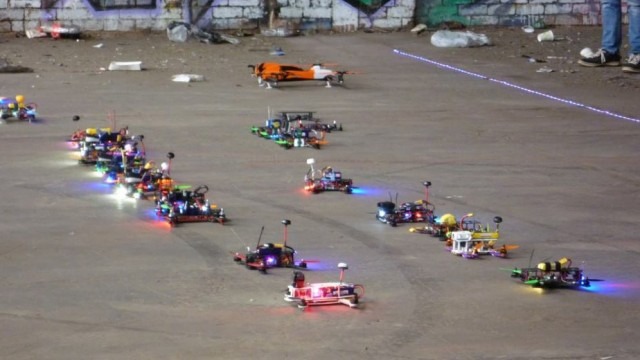Drone Racing: Everything You Need to Know Before Your UAV Hits the Skies
 Drone racing has become extremely popular as of late, with people increasingly purchasing drones and delving into drone piloting as a hobby, there’s naturally been some competition heating up. Drone racing is now considered a competitive sport, and it’s more complicated than one might think. Here’s a look inside this burgeoning sport.
Drone racing has become extremely popular as of late, with people increasingly purchasing drones and delving into drone piloting as a hobby, there’s naturally been some competition heating up. Drone racing is now considered a competitive sport, and it’s more complicated than one might think. Here’s a look inside this burgeoning sport.
What Does Drone Racing Entail?
At first glance, you’re more or less expecting drone racing to be a remote control airplane race—and on a very base level, that’s not too far off. But, drone racing is hard to get the hang of. Pilots race their drones at high speeds, through a number of obstacles, controlling the devices as they venture far out of sight.
Obviously, you need to learn how to fly a drone before you can even consider racing the thing, but drone racing requires a real high-level skillset. You’ll need to have perfect control in order to keep equipment safe, as well as avoid obstacles like cars, people, birds and more.
Why Do People Race Drones?
People like racing drones because they offer a more interactive experience than just taking a remote control airplane out in the backyard, cameras, goggles and add-ons all make for challenging, explorative experience that gives users the ability to see into places we don’t have access to due to our human limitations. The racing part of the equation? Well, that’s just human nature—why not turn life into a video game?
FPV—The Most Common Type of Drone Racing
FPV, or first-person-view racing, is the most popular form of competitive drone piloting. Almost like virtual reality with real life implications, FPV allows the pilot to view the surrounding landscape as though they were inside a drone themselves. The Drone Racing League or (DRL) gathers professional level FPV drone pilots from around the world to race in iconic locations.
FPV racers may want to look into capturing some of the excitement on video or through aerial stills. Here’s a guide to drones with cameras by Dronethusiast for some good options.
How to Get Involved
If you’re not a drone-racing professional, but want to get in on the excitement you’ll need to get a racing drone, as well as some peripherals like FPV goggles, a video receiver and a good charger to keep drones charged for long trips on the road. You’ll also want a good quality controller, which will come in handy when you start hitting high speeds.
Look online for local amateur leagues or meetups, and get involved with others in the drone community. If you’ve got the skill find a race to sign up for and go from there.
Before you start looking at drone racing leagues, get used to flying your drone in your line of sight. Practice takeoff and landing techniques, then work your way up to navigating around tight spaces. To get the hang of FPV goggles and controlling something that’s out of your natural line of sight, start small. As they always say, practice makes perfect.
I am a professional photographer, and I have hired new employees for my business, so I felt necessary to add new photography equipments in my collection, including drones. I was looking for low-cost deals when I came to know that how easy it is to buy refurbished drones here at Droneswithcameras.com. Of course, I did not like missing the chance, and I bought two of them immediately.